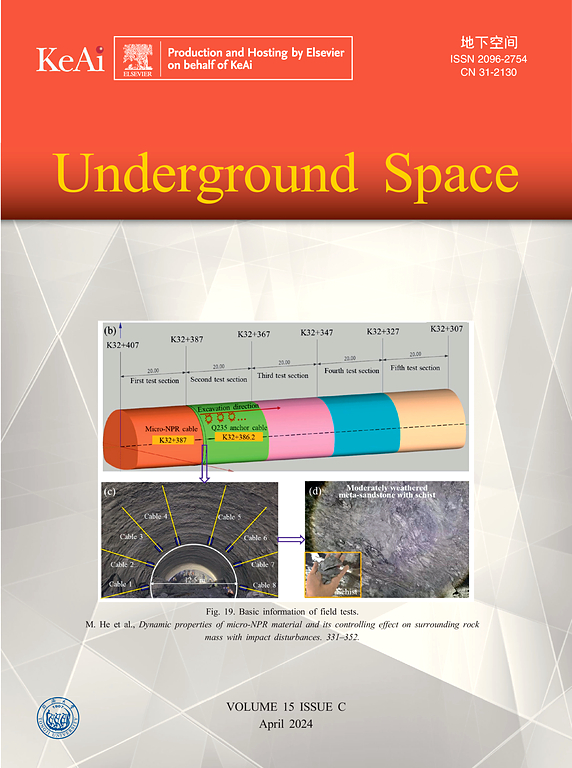地温对施工隧道火灾烟气动力学的影响
IF 8.3
1区 工程技术
Q1 ENGINEERING, CIVIL
引用次数: 0
摘要
山区交通网络的发展导致越来越多的隧道被建造在地热活动频繁的地区。通过一系列缩小比例的实验,研究了地热温度、放热速率和火源位置对建筑隧道火灾温度分布和烟雾运动的影响。结果表明,地热条件加热空气,在施工隧道内形成分层流动。对诱导气流沿隧道长度方向的温度和速度进行了表征。地热条件引起的上层气流阻碍了烟气向隧道工作面扩散,形成复杂的热分层现象。建立了考虑地热温度、热释放速率和火源位置的火源上游烟气扩散长度预测模型。此外,对顶棚温度分布进行了分析,发现下游温度衰减对火源位置不敏感,上游温度衰减根据火源位置可分为地热影响区和非地热影响区。分别建立了顶棚上下游温度分布的预测模型。这些发现增强了对高地热条件下施工隧道火灾烟气动力学的认识。本文章由计算机程序翻译,如有差异,请以英文原文为准。
Effects of geothermal temperature on smoke dynamics in construction tunnel fires
The development of traffic networks in mountainous areas has led to an increasing number of tunnels being constructed in regions of high geothermal activity. This study examined the effects of geothermal temperature, heat release rate, and fire source location on temperature distribution and smoke movement in construction tunnel fires through a series of scaled-down experiments. Results showed that geothermal conditions heat the air, creating layered flow within construction tunnels. The temperature and velocity of the induced airflow along the tunnel length were characterized. The upper airflow caused by geothermal conditions hinders the spread of smoke toward the tunnel face, resulting in a complex thermal stratification phenomenon. A model for predicting the smoke diffusion length upstream of the fire source was developed, considering geothermal temperature, heat release rate, and fire source location. Additionally, the ceiling temperature distribution was analyzed, showing that downstream temperature decay is insensitive to fire location, while upstream temperature decay can be divided into geothermal-affected and non-affected zones based on the fire source position. Prediction models for the ceiling temperature distribution upstream and downstream were established, respectively. These findings enhance the understanding of smoke dynamics in construction tunnel fires under high geothermal conditions.
求助全文
通过发布文献求助,成功后即可免费获取论文全文。
去求助
来源期刊

Underground Space
ENGINEERING, CIVIL-
CiteScore
10.20
自引率
14.10%
发文量
71
审稿时长
63 days
期刊介绍:
Underground Space is an open access international journal without article processing charges (APC) committed to serving as a scientific forum for researchers and practitioners in the field of underground engineering. The journal welcomes manuscripts that deal with original theories, methods, technologies, and important applications throughout the life-cycle of underground projects, including planning, design, operation and maintenance, disaster prevention, and demolition. The journal is particularly interested in manuscripts related to the latest development of smart underground engineering from the perspectives of resilience, resources saving, environmental friendliness, humanity, and artificial intelligence. The manuscripts are expected to have significant innovation and potential impact in the field of underground engineering, and should have clear association with or application in underground projects.
 求助内容:
求助内容: 应助结果提醒方式:
应助结果提醒方式:


